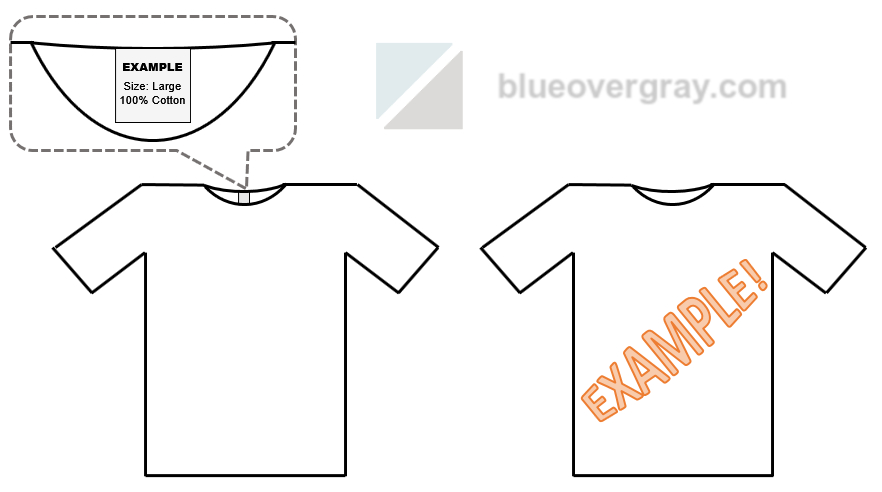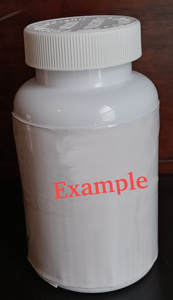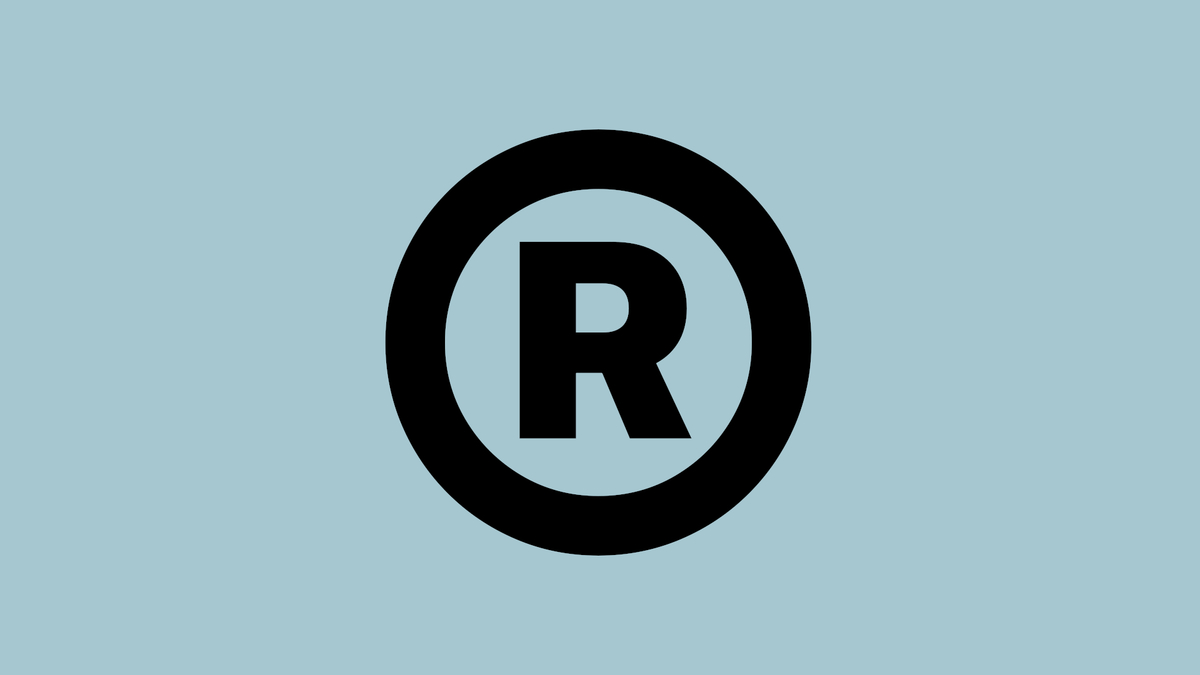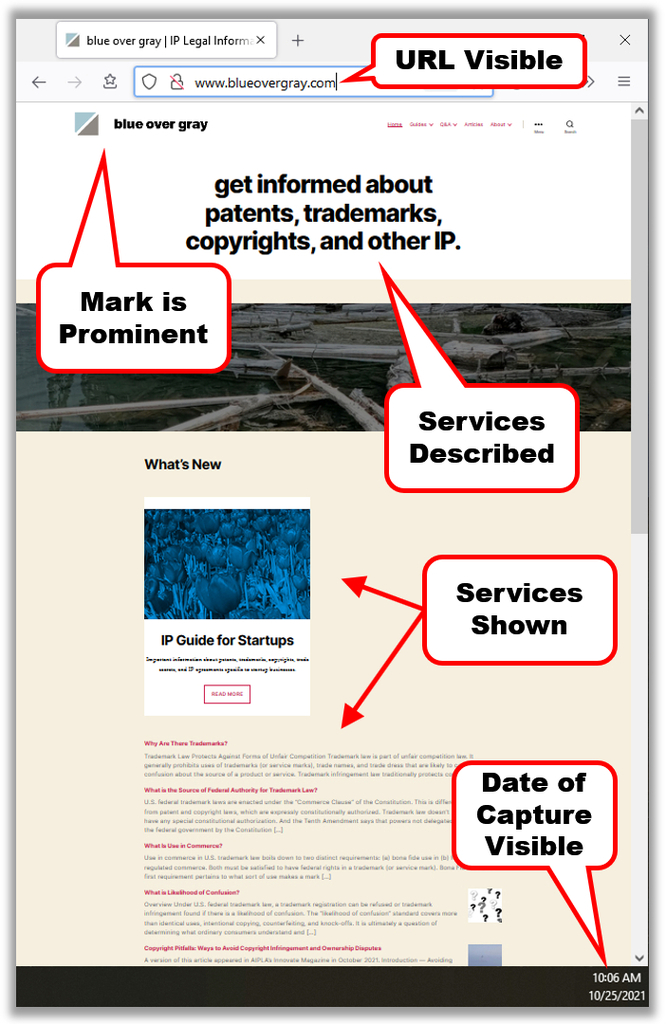Federal trademark rights in the United States are based on use in commerce. A specimen is evidence of actual, real-world use of a trademark (or service mark), such as a photo of a product bearing the mark. It is evidence of what consumers encounter when considering whether to purchase the branded goods or services. The U.S. Patent & Trademark Office (USPTO) generally requires specimens both to initially obtain a registration and to maintain an existing registration to keep it active. The Trademark Office will scrutinize a specimen to ensure that it is acceptable under current guidelines. So you need the right specimen(s). A knowledgeable trademark attorney can help identify suitable specimens.
General Requirements for Specimens
There are some general requirements that apply to all specimens. What all the requirements have in common is that they look at the branding a U.S. consumer is presented with when considering purchasing the goods or services. These considerations take into account industry norms.
First, an acceptable specimen must show the mark used in a way that consumers would perceive it as a source indicator—something that allows consumers to identify and distinguish goods or services emanating from different manufacturers, sellers, or producers. In that sense it must function as a mark.
One consideration is whether usage of the mark is prominent enough. If the mark is used only in passing or is difficult to identify amidst other things then the specimen is probably not acceptable. There must also be a direct association between the mark and the identified goods or services. A label or tag unattached to anything that shows only the mark but no other information fails to make that association.
Another consideration is proper usage. A term used generically or merely to provide information about the goods or services, or a graphic used merely for ornamentation or decoration, is not functioning as a mark.

In the graphic above, the specimen on the left represents a hypothetical photo of a shirt with an attached tag bearing the EXAMPLE mark. This would be an acceptable specimen of use of the EXAMPLE mark because the goods (a shirt) is visible, and a tag bearing the mark is attached inside the shirt at the collar in a customary way. This same specimen would not be acceptable to show use of “large” or “100% Cotton” as marks, however, because those are merely pieces of information about the size and materials of the shirt itself, in a generic sense. The specimen on the right is usually unacceptable because it shows ornamental (or aesthetically functional) use of the word “Example” rather than use as a mark. Acceptability depends on context.
It is necessary for a specimen to show a real use. A specimen cannot be a mock-up, printer’s proof, digitally altered/fabricated image, rendering of intended packaging, or draft of a website that shows how a mark might appear. Similarly, a copy or reproduction of a drawing of the mark in isolation (for instance, a logo alone), and not actually applied to commercial goods or service advertisements, is insufficient. A specimen must provide enough context for someone to understand how it specifically shows usage with the relevant goods/services. In general, you can think of a specimen as representative evidence of actual use that is already occurring. But anything that only portrays planned, hypothetical, or theoretical use is not acceptable as a specimen.

The example above shows a photo of a pill bottle with a label that has been digitally altered to add the EXAMPLE mark. The digital alternation of the photo is clear because the text does not wrap around the bottle like the rest of the label. There is also no other information or decoration on the label that would normally appear on a commercial product like this, such as to convey the number of pills contained or the net weight of the contents. The digitally altered image above would not be acceptable as a specimen of use.
Specimens must also correspond to usage with the particular goods and services identified in an application or registration. Usage with one good or service will not suffice to show usage with an entirely different good or service. If there are multiple classes of goods or services at issue, then multiple specimens are usually required.
The date a specimen was captured matters. For new trademark applications, a specimen should be recent. Specimens used to maintain existing registrations must be current, meaning the specimen must be from the window of time in which proof of current use can be submitted. Whenever a web page screenshot or printout is used as a specimen, the date and URL must be included. Ideally screenshots and printouts should be captured in a way that automatically includes that information.
A specimen must also show the same mark identified in the application or registration. Sometimes marks change over time. Such changes, if material, can mean the old mark is no longer being used. A common problem involves redesigning or refreshing a graphical logo to look more modern, which may affect the ability to maintain an existing registration. Changes to colors and graphical elements of a logo may mean you are using a new and different mark, even if the same words appear in both versions. Inconsistent spelling or wording of a mark may also make a specimen unacceptable.
But the particular sorts of evidence acceptable as specimens will depend on whether it is for a trademark (for goods) or a service mark (for services). Those different goods/services requirements are taken up below.
If a specimen is defective, there may be opportunities to submit a substitute. But failure to submit a proper specimen from the start might lead to loss of priority if a suitable substitute specimen (gathered on or before the date the trademark application was filed) is not available.
Specimen for Goods (Trademarks)
A typical form of an acceptable trademark specimen for goods is a photograph of a product bearing the trademark on an attached label or tag. A photo of the trademark stamped or imprinted on products themselves or on their packaging or container is also common and acceptable. But a package insert bearing the mark that is not visible to customers (unlike a conventional label or tag) is generally not acceptable.
| Acceptable as Specimen for Goods | Unacceptable as Specimen for Goods |
|---|---|
| Photo of mark on product itself or attached tag/label | Mock-ups/digital renderings/altered images |
| Photo of mark on product packaging/container | Package insert not visible at time of purchase |
| Printout or screenshot of an e-commerce web page where the product can be purchased (for example, showing “Add to cart” or cart/bag icon) | Web page, brochure, or catalog with no way to purchase product |
| Copy from catalog page where ordering information is provided (for example, “Call this number to place an order”) | Copy of magazine advertisement |
| Screen shot of web page for downloading installable software | Receipt or invoice confirming prior purchase |
| Installable software in-app screen capture | Business card |
A display associated with the goods might be acceptable. Examples of displays include in-store displays, catalogs, and web pages. But to be acceptable a display specimen must show use of the mark (a) directly associated with the goods and (b) that display usage must be at the point-of-sale.
Display specimens often raise acceptability problems. The USPTO looks at “point-of-sale” rather strictly by analyzing whether and how ordering information is provided. Web pages, in particular, sometimes fail to meet all the requirements. Acceptability can sometimes hinge on web page layout.
Typical e-commerce “shopping cart” and “shopping bag” buttons and icons shown near the goods meet point-of-sale requirements. But “contact us for more information” or “where to buy” links are insufficient because they put an extra step between the online display and the ability to purchase the goods. Telephone numbers and email addresses may be sufficient if accompanied by special instructions for placing or accepting orders, such as “call now to buy” or “e-mail your order.” But the mere presence of a phone number or email address is often not sufficient.
For downloadable or installable computer software, an acceptable specimen can be an in-app screen shot showing the trademark. Alternatively, a web page screen shot can be used but only if (a) it creates an association between the trademark and the software and (b) provides sufficient information to enable the user to download or purchase the software from the website—like the point-of-sale display requirements discussed above. Another important distinction here is that cloud computing systems (SaaS, PaaS) used on a temporary basis but not downloaded or installed by a consumer are treated as services rather than goods for trademark purposes.
Various non-traditional trademarks (sounds, scents, etc.) have different specimen requirements. But those sorts of trademarks are rather uncommon.
When it comes to goods, however, mere advertising is generally not acceptable as a specimen. This is probably the most frequent area of misunderstanding. Mere advertising typically does not occur at the point-of-sale for goods. Though there are exceptions, such as an ad that includes purchase instructions, like a TV infomercial. But usually a copy of something in a magazine or online that merely merely tells prospective purchasers about the goods or promotes the goods won’t be accepted as a specimen of use for goods—even though advertising is accepted as specimens for services.
The USPTO provides some examples of acceptable and unacceptable specimens for goods.
Specimen for Services (Service Marks)
A service mark specimen must show the mark as actually used in the sale of the services. But a wider range of specimens are accepted for services than for goods. Acceptable specimens show use in the performance or rendering of the services or in the advertising of the services. A typical form of an acceptable service mark specimen is a web site printout or screen capture that shows the mark in direct association with a description of the services as part of an online advertisement.
| Acceptable as Specimen for Services | Unacceptable as Specimen for Services |
|---|---|
| Screen shot of web page mentioning services | Screen shot of web page that does not mention the services |
| Copy of magazine ad or brochure mentioning services | Copy of magazine ad or brochure that does not mention the services |
| Sign-in screen capture for online, cloud-based software platform (SaaS/PaaS) | Screen capture of online software not showing the mark |
| In-app screen capture showing use of non-downloadable software | Screen shot of web page to download installable software |
| Copy of business card or letterhead referencing services | Copy of business card that does not mention the services |
| Photo of service vehicle bearing the mark | Photo of service vehicle not showing the mark |
| Invoice with service details | Blank form for invoice or receipt that does not describe the services |
Even though a broader range of specimens can be used for service marks for services than for trademarks on goods, not anything will suffice. The USPTO provides a number of helpful examples of acceptable and unacceptable service mark specimens.
Common reasons a service mark specimen might be insufficient include a failure to function as mark or an insufficient identification of the applied-for or registered services (in direct association with the mark). For instance, if an application identifies services that are not clearly identified in the specimen it will not be accepted—even if that same specimen might be acceptable for different (but not applied-for) services. And web site screenshots showing vague descriptions of services might not support an application for services identified in a more specific way. For example, a web site saying “we deliver a variety of customer solutions” would not be sufficient for an application identifying “computer programming services.”
In the example above, a web page screenshot of blueovergray.com would be an acceptable specimen for services identified as “providing a web site featuring legal information.”
Another important requirement is that the URL and date of capture must be provided for web site printout and screenshot specimens. The USPTO’s “TEAS” online system allows the URL and date of capture to be manually entered for a specimen. But ideally a web site specimen should be captured in such a way that the URL and date are directly embedded in the capture or printout. The example above shows the URL and date of capture embedded in the specimen.
State Trademark Specimens
Individual U.S. states also permit trademark registrations. The specific requirements vary by state. Though specimens are usually required. The criteria for determining what is an acceptable will depend on state law. But the guidelines discussed above for federal trademark registration still represent a good starting point when thinking about such things. Though, as you might expect, specimens for a state registration typically must show usage of a mark in that particular state.

Austen Zuege is an attorney at law and registered U.S. patent attorney in Minneapolis whose practice encompasses patents, trademarks, copyrights, domain name cybersquatting, IP agreements and licensing, freedom-to-operate studies, client counseling, and IP litigation. If you have patent, trademark, or other IP issues, he can help.


